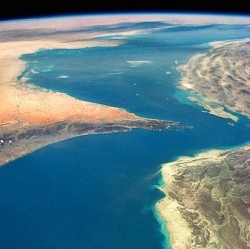
After months of delay, Congress unveiled its plans for funding the federal government in 2016. Assuming this legislation passes into law without major modifications, NASA will fare well. The space agency is set to receive $19.3 billion, nearly $1.3 billion more than it did last year. So, did everybody win? Almost. Here are some highlights:
Planetary Science
This is just a fantastic number for the Planetary Science Division. Planetary Society members sent over 120,000 messages to Congress and the White House this year asking for this increase. And after a year of stunning successes by NASA spacecraft at Pluto, Ceres, and Mars, this increase is well earned.
Commercial Crew
NASA was pushing this one, hard. It had requested $1.243 billion to keep both Boeing’s CST-100 Starliner and SpaceX’s Dragon V2 on track for 2017. From the NASA Administrator to astronauts on the space station, the message was consistent: we need this amount to stay on track. They got it. $1.243 billion for Commercial Crew in 2016.
The Space Launch System (SLS)
Here’s what a real congressional priority looks like. The President requested $1.36 billion. Congress will spend $2 billion. That’s a $640 million increase above the request for what will be NASA’s most powerful rocket since the Saturn V. The SLS was also baselined as the launch vehicle for the future Europa mission.
Earth Science
The Earth Science Division at NASA is funded at $1.921 billion. That’s less than the President’s request, though it still represents a $149 million increase over last year’s budget.
Space Technology Mission Directorate (STMD)
This perennially underfunded mission directorate stands to receive $686 million. That’s $39 million shy of the President’s request, though it represents a $90 million increase over last year’s amount. However, an earmark directs $133 million of the STMD’s budget to be spent on the RESTORE-L satellite servicing project, a program moved over from the International Space Station budget line that will more than consume the increase to STMD this year.
What’s Next
This bill is referred to as “omnibus” because it mushes together what would have been twelve separate pieces of legislation into a single, 2,000 page epic. Essentially every part of the government that is not Social Security or health care is funded by this omnibus bill. And if this bill can’t get signed into law, the federal government has no money to spend, and the government shuts down. Hence this bill is considered a “must-pass” piece of legislation.
Knowing this, members of Congress attach unrelated policy statements in the bill that, while divisive, are not bad enough to sink the passage of the entire bill. Knowing how many policy riders you can get away with is a fine line to walk, and it was one reasons this bill was in negotiations for so long. Do not be surprised if you read about these policy riders in the next few days. It’s one of the reasons why omnibus legislation is generally a bad idea.
However, the fact that this bill being released to the public and being readied for a vote means that the Congressional leadership believes they have the votes necessary to pass the thing. That’s no guarantee, but better chances than not. The White House has indicated that it will sign the bill as it currently stands.
